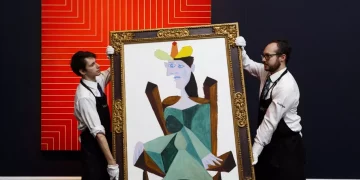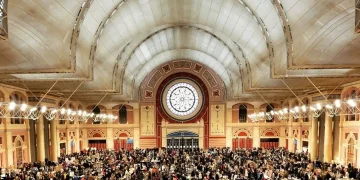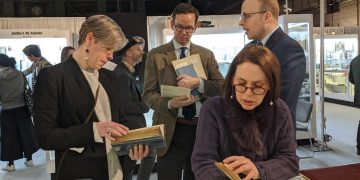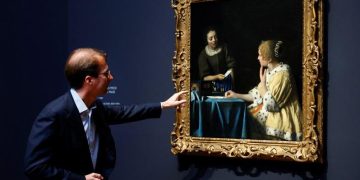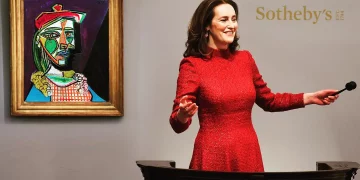Introduction
The world of rare collectibles is rich in history, culture, and often, mystery. Every rare item that makes its way to auction carries a story—a journey that began long before the item arrived in the auction house. Whether it’s a priceless painting, a rare coin, a vintage car, or an iconic piece of memorabilia, the value of a collectible is often rooted in the narrative behind it. These hidden stories can deeply influence the market value of the item, creating a fascinating layer of intrigue for collectors and investors alike.
As the auction industry continues to grow, understanding the stories behind these rare items can give you a significant edge when participating in upcoming auctions. In this article, we will uncover some of the captivating, hidden stories behind rare collectibles slated for auction, and explain why these stories matter when it comes to pricing and bidding strategy.
1. The History of the Item: Provenance and Its Power
Every rare collectible has a unique past, often referred to as its provenance. Provenance tells the story of an item’s ownership, its journey through time, and the individuals or institutions that have owned it. Provenance can add incredible value to an item, as collectors are drawn to pieces with a fascinating, well-documented history.
Key Points:
- Notable Previous Owners: An item with a prestigious lineage—such as having once belonged to a famous collector, royal family, or celebrity—can significantly raise its value. For example, a painting once owned by Picasso or a vintage watch that was part of a private collection owned by a world-renowned businessman could fetch millions at auction.
- Historical Significance: Items linked to significant historical events or figures often carry a deep cultural and emotional resonance. For instance, a rare piece of war memorabilia, like a letter or medal from a World War II hero, can be highly desirable due to its connection to a specific moment in history.
- Cultural Legacy: Certain items hold intrinsic value due to their representation of a particular era, culture, or movement. A rare stamp from a bygone colonial period, or a limited-edition coin that commemorates a historical event, is often valuable not just because of its rarity but because of the stories it tells about the time it came from.
2. The Hidden Stories of Artists and Creators
Rare collectibles, especially in the realm of fine art, often have fascinating stories behind the artists or creators. These stories can amplify the worth of a piece, especially when the artist’s life and career are intertwined with larger cultural or social movements. For instance, discovering that a painting was created during a pivotal moment in an artist’s life or career can give the work an added layer of meaning.
Key Points:
- The Artist’s Biography: Artists with controversial, tragic, or inspiring life stories often see their works appreciate over time. Think of the iconic works of Vincent van Gogh, whose tragic life story and posthumous fame have only amplified the value of his paintings. Or Frida Kahlo, whose personal struggles and political views add layers of meaning to her art, making it more desirable for collectors.
- Art Movements and Context: A piece created within the context of a specific art movement, like Impressionism or Abstract Expressionism, can also increase its value. The story behind how an artist contributed to a major movement—whether it was a groundbreaking work that challenged societal norms or an experimental piece that led to new techniques—can significantly influence its auction price.
- Lost or Rediscovered Works: Sometimes, pieces that were thought to be lost or destroyed are rediscovered. The story of a forgotten masterpiece coming back into the spotlight can create a stir in the market, driving demand. For example, finding a long-lost sculpture by a famous artist could trigger bidding wars due to its rarity and the story of its rediscovery.
3. The Impact of Rarity and Scarcity: Limited Editions and One-of-a-Kind Items
The value of rare collectibles is often tied to how scarce they are. Items produced in limited numbers, particularly those that are no longer in circulation, are highly sought after by collectors. Some collectibles are even more valuable due to their rarity, such as a printing error in a stamp or coin, or a limited-edition series of memorabilia linked to an iconic event.
Key Points:
- One-of-a-Kind Items: Items that are truly unique, such as prototypes or early drafts, carry immense value. For instance, an early sketch by a famous artist or a rare prototype of a luxury car often fetches higher prices due to their unparalleled uniqueness. A single misprint in a famous coin series or stamp collection can turn a seemingly ordinary item into a highly prized rarity.
- Limited Editions and Exclusive Releases: Many items, from rare watches to collectible sneakers, have limited runs. When a product is only produced in a small quantity, its desirability and value rise exponentially. A limited-edition watch, for example, may sell for hundreds of thousands of dollars at auction due to its rarity, even though it was initially sold for far less.
- Production Errors: Sometimes, mistakes in production can create a highly collectible and valuable item. A rare misprint on a stamp, such as the famous “Inverted Jenny” stamp, or a coin with a misstruck design, can create a frenzy in the market as collectors rush to acquire these valuable “flaws.”
4. The Tale of Personal Connection: Items with Emotional or Nostalgic Value
Some collectibles hold intrinsic emotional or nostalgic value for the seller or a group of people, which can influence their worth on the auction block. The personal connection attached to these items, whether it’s tied to a beloved figure or a significant moment in time, can be a powerful factor that adds depth and appeal.
Key Points:
- Celebrity Memorabilia: Items owned or worn by celebrities or historical figures can command astronomical prices due to the emotional connection that people feel toward these figures. Think of a famous movie prop, like James Bond’s Aston Martin DB5, or a vintage guitar owned by a legendary musician like Jimi Hendrix. These items tell a personal story, which can drive demand among those who have an emotional connection to the figure involved.
- Pop Culture Icons: Collectibles tied to iconic moments in pop culture—such as rare toys, movie posters, or memorabilia from major sporting events—often command significant prices. For example, an original Star Wars action figure in mint condition could be worth hundreds of thousands of dollars due to its deep connection to one of the most influential movie franchises of all time.
- Family Heirlooms: Some rare collectibles, especially antique furniture, jewelry, or artwork, come with stories passed down through generations. These personal histories add a layer of sentimental value that can sometimes influence the price, particularly if the item has been preserved in excellent condition.

5. The Auction House’s Role in Crafting a Story
Auction houses do more than just sell items—they play a significant role in crafting the story around a collectible. By providing context, expert appraisals, and historical background, auction houses help shape the narrative surrounding an item, which can, in turn, affect how much collectors are willing to bid. The way an item is presented, marketed, and its story is told can significantly increase its final price at auction.
Key Points:
- Expert Commentary: Auction houses often provide detailed descriptions and expert commentary about an item’s history, rarity, and significance. A well-written catalog description that includes historical anecdotes or the backstory of a piece can attract more attention and bidders. For example, a painting by a famous artist could be marketed not only for its visual appeal but also for its role in the development of the artist’s career.
- Curated Auctions: Some auction houses specialize in curating themed auctions, such as “Hollywood Memorabilia” or “Antique Coins.” These curated events tell a cohesive story that resonates with specific groups of collectors, creating a more intimate and personal buying experience. When items are part of a curated auction, their connection to the theme enhances their desirability.
- Provenance and Documentation: Auction houses often provide provenance documents, certifications of authenticity, and even personal stories from previous owners. This documentation offers transparency and helps build trust, which can drive the price higher.
6. The Mysterious or Untold Stories
Occasionally, collectibles come with mysterious or untold stories that make them even more intriguing. These items, which are often shrouded in secrecy or lacking full documentation, draw interest due to the mystery behind them. The allure of uncovering the full story—whether it’s the origins of an unknown piece of art or the true history of a rare item—can make these items even more desirable.
Key Points:
- Unknown Origins: Some collectibles come with minimal or no historical documentation, and their origins remain a mystery. This enigma can add an air of intrigue, making collectors eager to discover more. A painting with an unknown artist, for example, can become highly coveted once its true identity is uncovered.
- Unsolved Mysteries: Items linked to famous unsolved mysteries or conspiracies also draw attention. For example, a rare coin that may have been part of a pirate’s treasure or a letter connected to a historical figure involved in a famous scandal could spark intense interest at auction due to the mysterious circumstances surrounding its creation.
- Legendary Anecdotes: Some items have legendary stories attached to them that may not be entirely verifiable. For instance, a rare artifact purported to have magical powers or a piece of rock supposedly from the moon might sell for a premium simply because of the myths that surround it.
Conclusion
The world of rare collectibles is full of hidden stories—stories of people, places, events, and emotions that contribute to the value and allure of each item. Whether it’s the provenance of an ancient artifact, the inspiring life of an artist, or the emotional connection between a celebrity and their belongings, these narratives elevate the collectible from an object to a piece of history.
As you prepare for upcoming auctions, understanding the stories behind the items you’re interested in can help you make more informed and strategic bids. The power of storytelling in the world of rare collectibles is immense, and by uncovering these hidden histories, you can gain a deeper appreciation for the item you’re pursuing, and perhaps even secure it for your collection.








